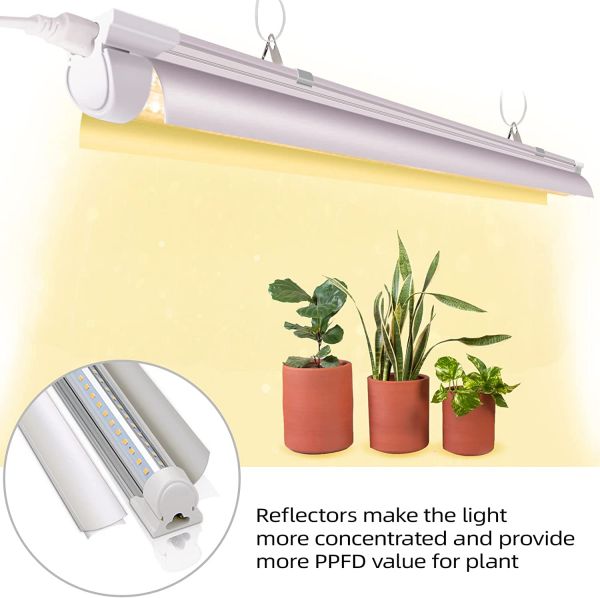
LED grow light technology is being rapidly developed in the context of indoor farming and agriculture sparking off a new era of innovativeness as well as sustainability. Improving trends and breakthroughs are expected to bring significant changes in indoor food production through better control, enhanced efficiency, and greater productivity in growth spaces. Some of the main developments that will shape the future LED bulbs have been presented here.
Smart Lighting Systems
Among these trends noted in relation to LED grow light technology is the emergence of smart lighting systems. These systems integrate advanced sensors, controls, and algorithms that monitor real-time environmental parameters such as light intensity, spectrum, temperature, and humidity levels. Better conditions for different crops at diverse growth stages can be achieved by using data analytics coupled with machine learning algorithms to dynamically vary lighting parameters for optimal plant growth rates and energy consumption patterns.

IoT Integration
Crucially important to mention is the IoT integration within LED grow lights industry today. The smartphone applications or web-based platforms will enable growers using IoT-enabled grow lights to control their indoor farms from afar. This allows remote access to data by growers themselves who may choose on-the-go notifications and alter light settings wherever they are thereby making it easier for them to manage their growing plants.
Spectral Tuning Capabilities
The technological advancements in spectral tuning capabilities continue to push forward research into new frontiers related to LED grow lights. Initially fixed spectra from modern LED fixtures could now be customized according specific requirements for various plants species at every stage of growth cycle. By manipulating ratios between red (R), blue (B), green (G) and far-red (FR), horticulturists enjoy having control over flowering time period, plant morphology as well as nutrients content; thus emphasizing on quality standards along with yield size maximization realized through quantitative approach towards cultivating fruits’ vegetables locally inside one’s home throughout seasonally changing climates. They also support the making of energy-efficient designs of lighting installations for optimal photosynthesis in plants that are healthy.
Ongoing Research and Development
The push for improved efficiency, performance, as well as environmentally friendly light fixtures has fueled continuous research and development into LED grow lights technology. There is still much exploration to be done regarding new materials, design concepts or even manufacturing techniques which would enhance LED fixtures’ dependability while reducing their cost and overall environmental impacts. It can be expected that quantum dot technology, OLEDs (organic light-emitting diodes), or micro-LED arrays may contribute to higher luminosity levels, more efficient systems, and longer life spans going beyond current state-of-the-art solutions.
To sum up, emerging trends and innovations in LED grow light technology are revolutionizing future indoor gardening and agriculture. Unprecedented control over growing environments’ efficiency levels has been obtained through smart lighting systems, IoT integration in addition to spectral tuning capabilities among other things. In conclusion, it is necessary to reiterate the integral part that these bulbs will play going forward toward solving global problems linked not limited to world food supplies but also shortage of resources concerning sustainability issues involved with environmental pollution as well as land exploitation and social status provided by ever-rising population on earth today.
Previous:
Next: Beyond Horticulture: The Many Facets of LED Grow Lights